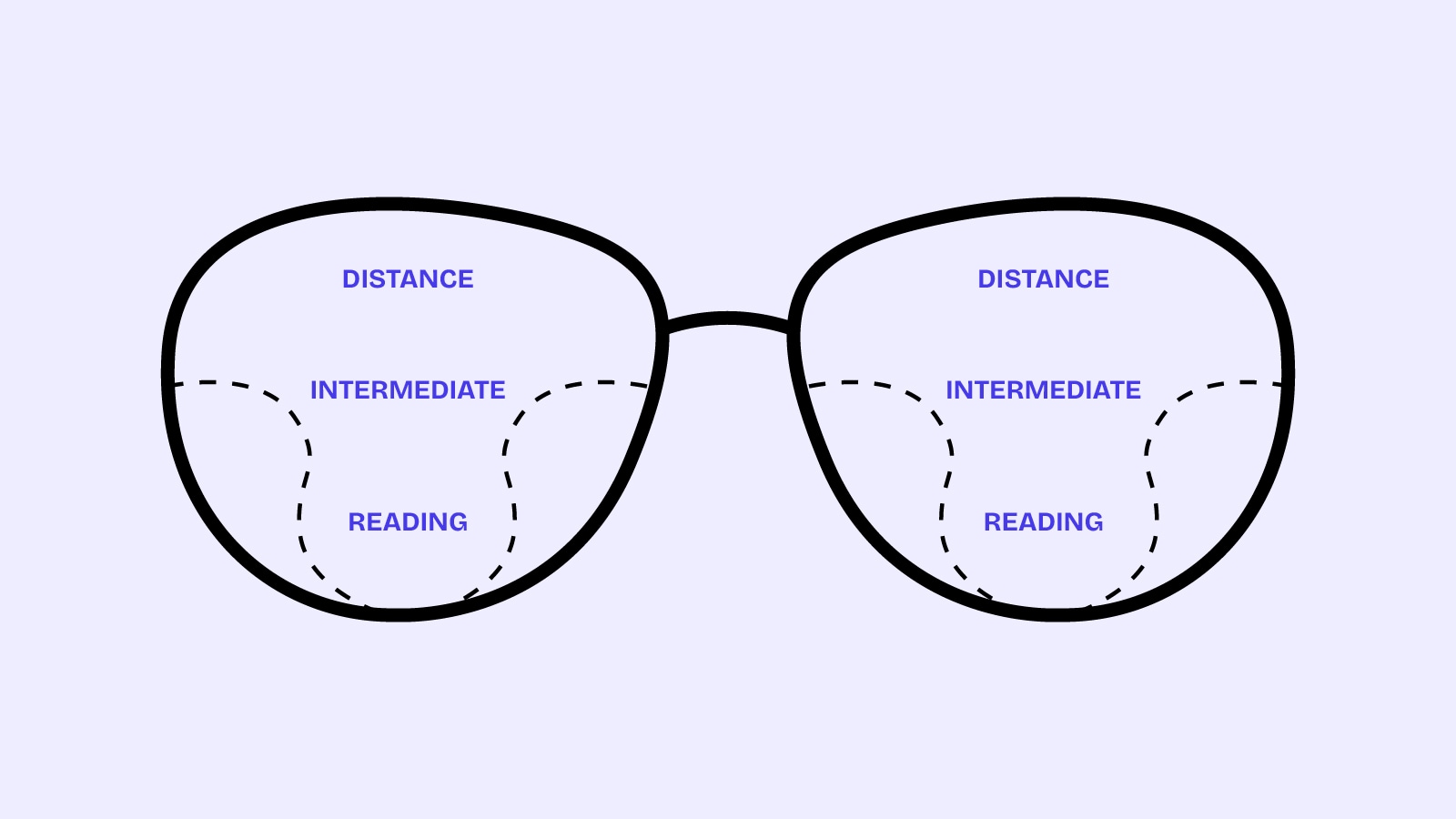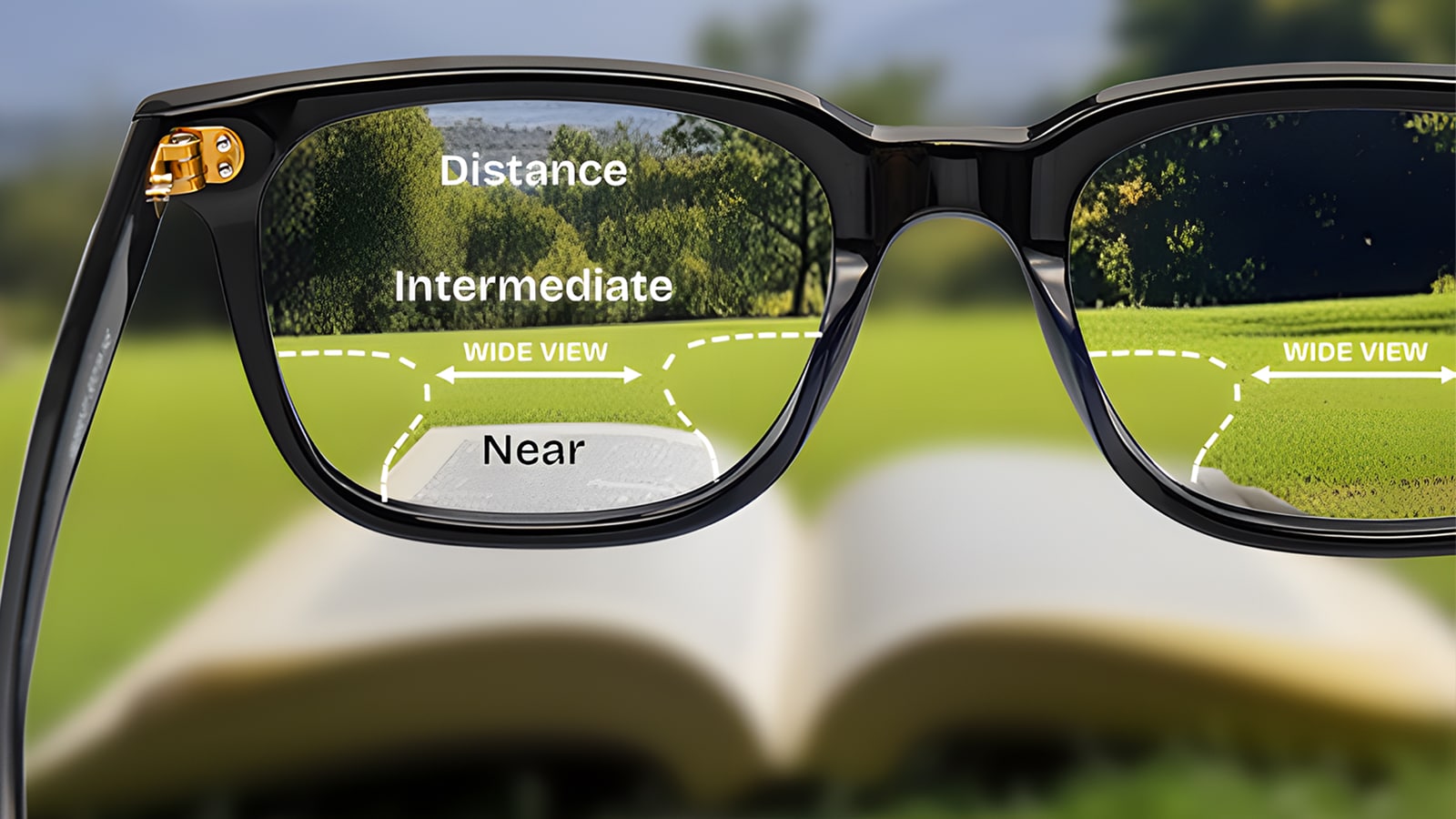Progressive lenses offer seamless vision correction for distance, intermediate, and near needs. They look like single vision lenses but work harder. Not all frames can support these special lenses. Picking the wrong frame can cause vision zones to shrink or misalign, making reading or driving difficult. This guide highlights frame styles to avoid and shares tips to pick the best frame for progressive lenses. Read on to keep your vision clear and comfort high.
What Are Progressive Lenses?
Progressive lenses let the wearer see far, middle, and close areas without lines between zones. The lens top corrects distance, the middle helps with screen use or arm’s length tasks, and the bottom helps with reading. This design gives a smooth visual experience compared to bifocals or trifocals, and it looks more modern and neat.
Progressive lenses need enough room to fit each zone. Narrow or tight frames may squash these areas, making vision unclear. Frame choice matters here because small frames may trim the progression zone too much, causing blurred vision or extra head movement to find the right spot.

Learn more about how they work here: Are You Interested in Progressive Lenses
Frames to Avoid for Progressive Lenses
Not every frame can support the design of progressive lenses. While some frames may look stylish, they don't offer enough space for the progressive zones to function properly. Some frames do not sit well on the face or support the lens shape. These can lead to a blur or strain. Below are frame styles that often cause trouble with progressive lenses and are best avoided.
Small Frames (Less than 28 mm Lens Height)
Progressive lenses need enough vertical space to include all vision areas. Frames with a lens height less than 28 mm do not provide enough room. Users may feel that vision zones mix up or become tiny. It can feel like looking through a peephole.
Narrow Frames
Narrow frames limit your peripheral vision, making it harder to see clearly in the middle and distance zones. A horizontal width under 50 mm limits the vision area. This forces the head to turn to find a clear view. Moderate-width frames give a more natural sightline.

Highly Curved or Wraparound Frames
Curved frames may warp progressive optics. They make the zones shift sideways and distort side views. These work better for sports than for everyday vision with progressives.
Shallow or Narrow Bridge Frames
The bridge of the frame sits on the nose and aligns the lens zones with the eyes. If it sits too low or tilts, the zones do not match the eye position. This misalignment affects vision comfort and clarity.
Rimless or Semi‑Rimless Frames with Thin Lenses
These minimalist styles may fail to hold progressive lenses well. The thin edges can reduce optical clarity. Full support is needed to keep zones aligned correctly, especially for stronger prescriptions.
Frames with Unusual Shapes
Frames with unusual shapes, like tiny circles or strong geometric shapes, may not leave enough room for the progressive corridor. The eye may miss the clear area or shift often to focus.
Bad Pupillary Distance (PD) Fit
Progressive lenses need exact center alignment. Frames that do not match the pupillary distance misplace the optical center. This leads to blurred vision, eye strain, or a tight scanning pattern.
Tips for Choosing the Right Frames for Progressive Lenses
The right frame lets progressive lenses do their job. The right frame makes vision clear and keeps the eyes comfortable. Here are a few simple tips to help you choose the best frame for progressive lenses with more comfort and confidence.

- Look for frames with at least 28 mm lens height. A range from 30 to 34 mm is ideal for full comfort and the zone area.
- Go for lens widths between 50 and 55 mm. This ensures good peripheral vision with less head movement.
- Adjustable nose pads help align the lens so optical zones match eye level.
- Full‑rim frames offer solid support, keeping lenses stable. They also look neat and polished.
- Always work with an optician to measure pupillary distance and frame tilt. A precise fit means clearer vision.
Common Mistakes and How to Avoid Them
It's easy to pick frames based on style alone. But not every stylish frame gives good support for progressive lenses. Some popular picks like tiny round shapes or super oversized styles may look fun, but often cut into your clear vision zones. This can make reading or looking around feel harder than it should.
To stay on track, work with an expert and test frames before finalizing.
Conclusion
Frames that are too small, narrow, or oddly shaped do not work well with progressive lenses. These mistakes reduce the visual zone size or misalign it. For maximum comfort and clarity, choose frames with the right lens height and width, an adjustable fit, and sturdy support. Working with an optician makes all the difference.
Explore our range of progressive-friendly styles at ZEELOOL to find frames made for modern vision and daily comfort.




















